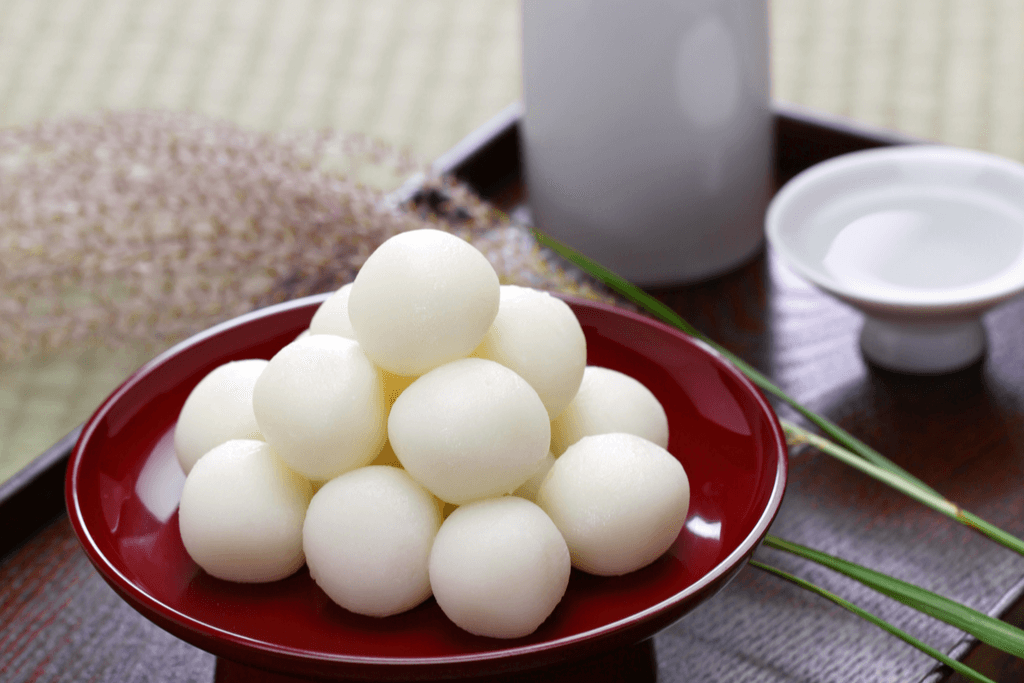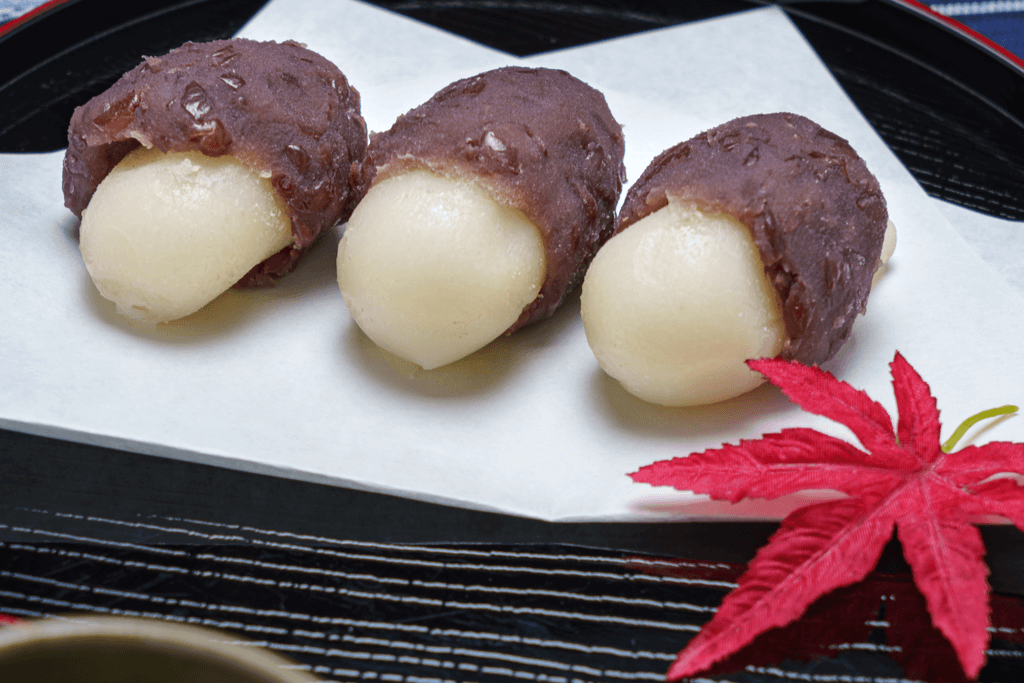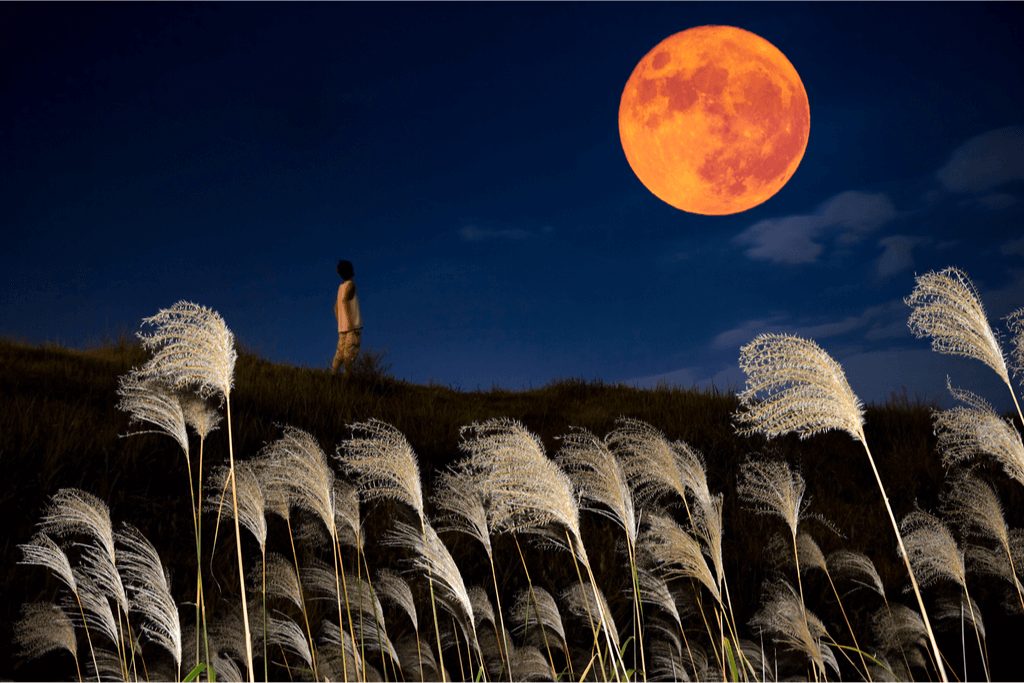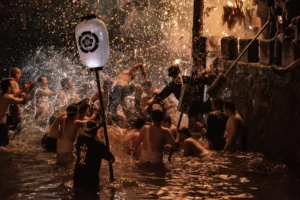Tsukimi (moon-viewing) festivals are one of the oldest festivals in Japan, with a history of more than 1000 years. Maybe not as exciting or bustling as hanami, the tsukimi moon festival is usually more formal and traditional, with just a few seasonal snacks and the moon as its primary focus.
Let’s head back to the old days to briefly learn about this celebration’s origin and how Japanese people celebrate this festival!
Table of Contents
ToggleThe Origin of the Tsukimi Festival

The Moon Festival, or Mid-Autumn Festival, is Tsukimi (月見) or Otsukimi (お月見) in Japanese. It means “watching the moon.” Another name for the event is Jugoya (十五夜), which refers to Japanese festivals honoring the new moon.
Many records suggest that tsukimi spread to Japan through representatives from the Tang Dynasty during the Heian period (794-1185). Originally, Otsukimi was only for royalty and aristocracy, and they celebrated it moon night in August. They often held lavish parties while reciting poems, performing operas on boats, and enjoying wine. However, by the Edo period (1603-1868), everyone celebrated the festival regardless of status.
Are there any legends surrounding tsukimi?
The full moon in the eighth lunar month is also the beginning of the harvest. For that reason, this day is also a happy day for Japanese farmers. This is an opportunity for farmers to express gratitude to the gods for bountiful harvests. Many agricultural households still maintain the tradition of holding these Tsukimi moon-watching festivals.
Similar to the Mid-Autumn Festival in China, you will see a lot of symbolic rabbits on different items. Japanese people believe that rabbits were one of the first inhabitants of the moon. If you look closely at the moon, you can see an image of a rabbit pounding mochi. The name of this process is mochitsuki.
Want to have a special at-home moon-viewing night with your friends and family? Let Sakurco help you out! Sakuraco delivers traditional Japanese snacks, sweets, tableware, teas, and more from local Japanese makers right to your door so that you can enjoy an authentic moon-viewing party right at your home!
In addition to the 15th of the eighth lunar month, Otsukimi is held for the second time about a month later – the 13th day of the ninth lunar month. Since the night of August 15 is given the unique name “night 15” (Jugoya), this night of September 13 is called “night of the 13th” (Jusanya) or “after the moon.”
The Japanese believe that once you see the moon on the 15th night, you must look at the moon on the 13th night. Because if you only look at the moon on the 15th night, you will have bad luck or disaster! This taboo in Japanese is “Kata-tsukimi” (片月見), and it’s a distinct feature of tsukimi.
How do people celebrate the Tsukimi Festival?

Moon-viewing festivals usually occur on August 15 in the lunar calendar, around the middle of September, or at the beginning of October in the solar calendar. This is an opportunity for everyone to enjoy the most beautiful moonlit night of the year.
Many temples and shrines across Japan celebrate the Tsukimi event with performances such as traditional dances and recitations from the Heian period. Some famous gardens even mimic the old festivals with a service providing moon-viewing in large yachts. You can enjoy this shimmering, magical full moon over the water with your loved ones.
Celebrating the Tsukimi Festival at home
In most Japanese homes, Tsukimi would celebrate much more modestly. People decorate spaces with objects like pampas grass (susuki) and offerings like Tsukimi Dango (balls of mochi). They also use autumn fruits like chestnuts, grapes, and pears. They are usually arranged on a porch facing south to share meals with the Moon Gods.

Nowadays, many people celebrate Tsukimi at home by incorporating some of the rituals of the home ceremony. For example, they may make Tsukimi a fun evening by hosting a picnic in ample space, like in their home gardens, and enjoy unique dishes like mochi dango, mochi, or seasonal fruits and drinks. If they can’t find seasonal fruits and drinks, snacks with similar flavors, like Japanese Kit Kats, are also popular.
The key here is to find an open space with little artificial light so that everyone can gather, have a good time, and enjoy the beauty of the full moon.
Does your country have any traditional events in autumn to enjoy the full moon? In the comments below, let us know more about how you celebrate the autumn season!










